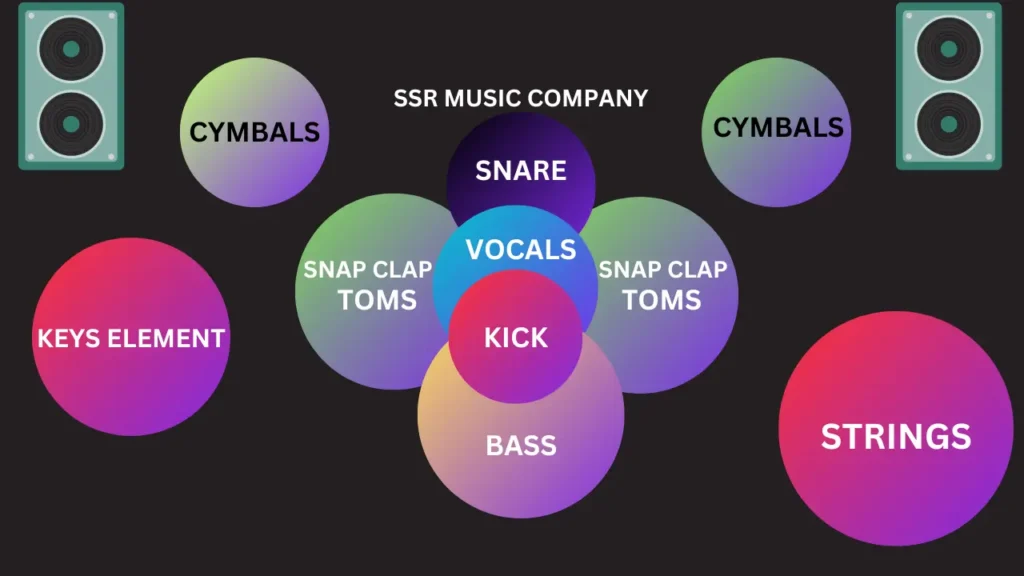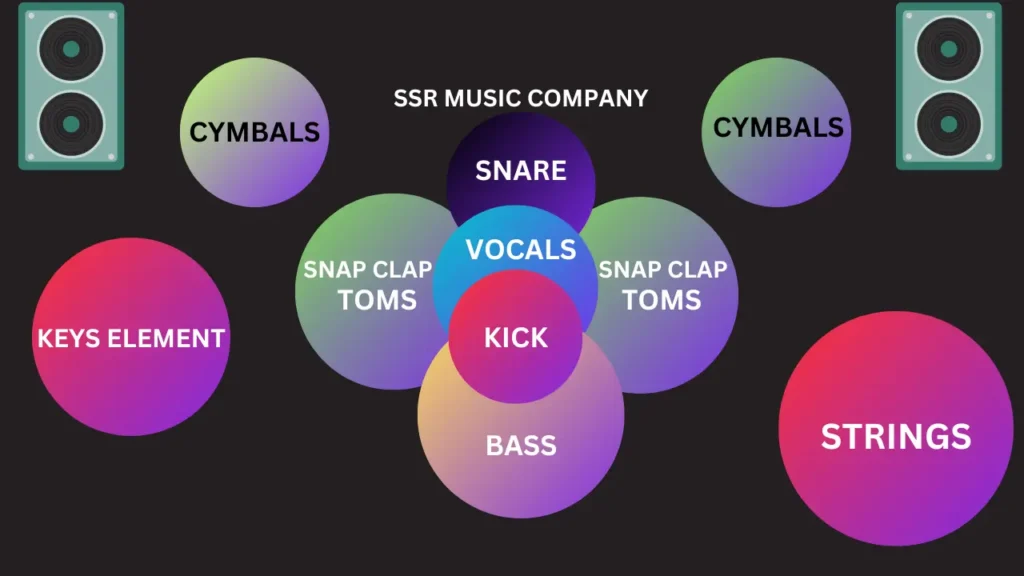
The Importance of Balancing Volume Levels in Mixing
Table of Contents
What are the balancing volume levels in mixing?
Achieving clarity, definition, and impact in a mix requires careful consideration of volume levels when mixing. It produces a unified and polished sound, improves dynamics, and avoids listener fatigue. This post will teach you the value of maintaining a balance between volume levels and how it can improve your mixes.
The significance of maintaining proper volume levels in mixing

Why should we focus on balancing volume levels in mixing?
One of the most important things to do when making a mix that sounds professional and well-balanced is to balance the volume levels. Even though it can seem like a straightforward operation, making sure that every component in a mix is properly balanced can have a big impact on the end product’s impact and overall quality. We’ll look at why volume level balancing in mixing is so crucial in this article.
Getting Defintion and Clarity
To establish clarity and definition in a mix, volume level balance is one of the main goals. Every component—instruments, effects, or vocals—should have a specific location throughout the audio spectrum. We can make sure that no single ingredient dominates the mix and that every element can be heard clearly and distinctly by balancing the volume levels.
Unbalanced volume levels can cause some components to be overpowered by others, creating a muddy and unclear mixture. This can make it challenging for listeners to distinguish between different voice or instrument components, which can make for a less satisfying listening experience. By adjusting the volume levels, you can avoid this problem and make sure that every component is visible.
Enhancing Impact and Dynamics
Increasing the dynamics and impact of a mix is another essential component of maintaining a proper volume balance. Dynamics are the changes in loudness levels that occur at different points in a music, from gentle to loud. These levels can be carefully adjusted to provide a mix with a more captivating and powerful sound.
The effective use of dynamics is made possible by properly balancing volume levels, whereby softer passages can develop tension and impact and louder sections can create a dramatic build-up. This disparity in loudness levels draws the listener in and makes the experience more immersive by adding depth and emotion to the mix.
Preventing Listener Fatigue
An issue that frequently arises when volume levels in a mix are not properly balanced is listener fatigue. It can be physically and psychologically exhausting for the listener to put up with some aspects for an extended amount of time when they are too loud or overwhelming. This could cause someone to lose interest in and have a bad opinion of the mix.
We can avoid listener fatigue and make sure the mix is engaging all the way through by maintaining a balance between volume levels. Unbalanced volume levels might overwhelm or distract the listener, but a well-balanced mix lets them concentrate on the music itself. In the end, this makes listening more enjoyable and raises the possibility that the mix will strike a chord with the listener.
Putting Together a Professional and Coherent Sound
A coherent and polished sound is produced when all the components of a mix are correctly matched. Harmonious interaction between the various elements is made possible by maintaining a balance in volume levels, which fosters a sense of unity between them.
A well-composed and well-produced mix conveys the sense that it was made by a professional. This is crucial in the music business since a mix’s quality can have a big influence on how people view a song or an artist. A balanced mix and attentive listening to volume levels are two ways that producers and engineers can improve the overall caliber of their work.
How to Mix Song Elements
The mixing process is essential to producing a great song because it unites all the components and produces a polished, industry-standard sound. To produce a final product that is well-balanced and cohesive, mixing entails altering the levels, panning, and applying different effects to each individual track in a song. We’ll look at the key actions and methods for successfully combining song elements in this guide.

Organize your tracks
Getting your tracks in the right order is crucial before you start mixing. This entails giving each track a label, putting comparable recordings (such percussion or vocals) together, and putting them in a sensible sequence. You can move through the session and make edits quickly if your tracks are organized.
Set the levels
Setting the levels for each track is the first step in the mixing process. One track at a time, start by changing the level until the music sounds good mixed in. To guarantee a well-balanced sound, pay attention to the relative levels between various tracks. To get the right balance, listen with your ears and believe on your instincts.
Pan the tracks
The arrangement of recordings in the stereo field is referred to as panning. You may give your mix a sense of depth and width by panning tracks. Try shifting the panning of various components to get a well-balanced and engrossing soundstage. To produce a stereo image, for instance, you can pan instruments slightly to the left and right.
EQ each track
A useful technique for adjusting the tonal balance of individual tracks is equalization (EQ). Employ equalization to boost desired frequencies, cut out unwanted ones, and make room in the mix for each component. For instance, you can use EQ to reduce a bass track’s low-end rumbling or to emphasize the presence of voices.
Apply compression
Compression is a technique used to manipulate a track’s dynamic range, making both the quiet and loud sections louder and quieter. It contributes to instrument sustain and leveling out the loudness. To get a more polished and polished sound, apply compression to individual recordings or groups of sounds.
Add effects
Reverb, delay, and chorus are examples of effects that can give your mix more depth, room, and personality. Try a variety of effects to improve the song’s overall tone. However, exercise caution when using effects excessively as this might muddy and clog the mix.
Create a balanced mix
Throughout the mixing process, constantly refer back to the overall balance of the mix. Pay attention to how each element interacts with one another and make adjustments as necessary. Ensure that no single element is overpowering or getting lost in the mix. A well-balanced mix will allow each element to shine and contribute to the overall musical experience.
Automate volume and effects
A great way to include movement and dynamics into your mix is with automation. Automate the process to gradually modify the effects settings and volume levels. For instance, you can create a steady increase in reverb during a chorus part or automate the voice track’s level to highlight specific phrases.
Reference and fine-tune
After you’ve finished mixing, it’s important to check your mix on multiple playback devices (such vehicle speakers, headphones, and monitors) to make sure it sounds good in a variety of listening situations. During the reference process, make any necessary modifications to address any concerns that come up.
Conclusion
One of the most important aspects of mixing that goes into making a mix sound excellent and professional is balancing the volume levels. It improves the music’s dynamics and impact while enabling clarity and definition. A well-balanced mix may create a unified sound and reduce listener fatigue, which can make a lasting impact on the audience. Thus, never undervalue the significance of maintaining a balance of volume levels in your mixes, regardless of your degree of experience as an engineer or as a budding producer.
To sum up, combining musical parts is a complex process that calls for keen attention to detail and a good pair of ears. These crucial procedures and methods will help you produce a professional mix that brings out the best in each component of your music.
Check out this blog related to this blog
Check our featured blog
7 Important Vocal Effects to Enhance Your Song
How Do Musicians Make Money?
How Do Musicians Make Money? Discover the most important revenue streams for musicians: live performances and tours, music sales and streaming, royalties and licensing, and merchandising and brand collaborations. Discover how various revenue streams influence a musician’s financial success and audience involvement in today’s music industry. Understand the value of strategic planning and personal branding…
The Elements of Music Theory: 7 Comprehensive Guide
What is the theory of the music? Music theory is the study of musical practices and possibilities. Its fundamental purpose is to provide a framework for understanding, composing, and evaluating musical works. Music theory allows artists and aficionados to understand the various structures and ideas that drive musical compositions ranging from classical symphonies to modern…
What are The 7 Musical Notes?
What are the 7 musical notes? Learn about the importance of musical notes and the concept of the C major scale. Explore how musical notes are the foundation of music theory and composition, and how they allow musicians to communicate and notate their ideas. Discover the relationship between different notes and how they create melodies…

Leave a Reply